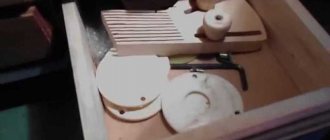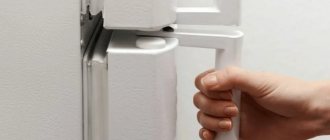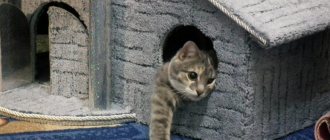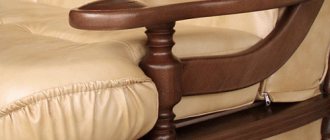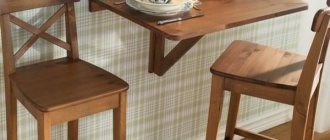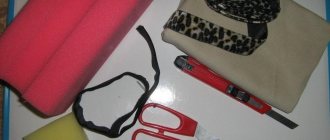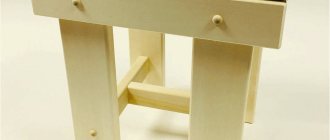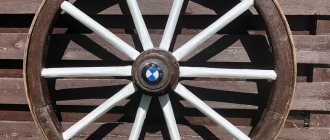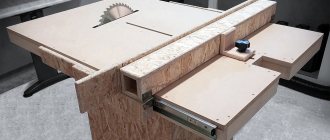Types and purpose
Tables for drilling machines come in several different types, can be made of different materials and function on different principles. This is a simple fixing device, with the help of which the workpiece is secured in the required position.
With the help of a table, a part is able to change its position and angle during processing; manipulation allows you to perform different types of processing without removing or moving the part. The methods for fixing equipment are as follows:
- using vacuum and differential pressure;
- mechanical devices;
- the part is held on the table independently due to its heavy weight.
For amateurs who are planning to make a table for a drilling machine with their own hands, the second fixation option is most suitable.
The workpiece being fixed in different installations has a different number of degrees of freedom - two or three. In the first case, she is able to move only along the X and Y coordinates; in the second, the ability to move up, down or along the Z coordinate is added. For home use, two degrees of freedom is quite enough.
This is interesting: Do-it-yourself lathe from a drill - instructions with drawings, photos and videos
Purpose and types
In essence, a coordinate table is a movable metal platform on the surface of which a workpiece processed on a machine is mounted. Various methods of such fixation are possible:
- using mechanical devices;
- by means of vacuum;
- due to the own weight of massive parts.
Mechanical two-axis table fixed in standard grooves of the working surface of a drilling machine
Depending on their functionality, coordinate tables for drilling machines can have two or three degrees of freedom. Thus, some models can only move in the horizontal plane (X and Y axes), while more technologically advanced ones can also make vertical movements (Z axis). Tables of the first type are used when processing flat parts, and devices with the ability to move vertically are equipped with drilling machines that process parts with complex configurations.
At large industrial enterprises where large-sized parts are processed, long coordinate platforms are often used, on which, thanks to the presence of a special mounting frame in their design, both the workpiece and drilling equipment can be installed. Most of the models are mounted on the machine itself or on the surface of a workbench.
Various types of drives can be responsible for moving the coordinate table:
- mechanical;
- electric;
- equipped with a CNC system.
Coordinate table with electric drives
Coordinate tables for machines: drilling, milling
An addition to the metalworking machine is a coordinate table that complies with GOST. It provides precise fixation and specified movement of the workpiece during processing with a cutting tool. This increases the functionality of milling, grinding, drilling machines.
Key Features
Structurally, coordinate tables are designed in such a way that metal processing is carried out in the most convenient position, the displacement is carried out with acceptable accuracy, and a smooth feed.
The defining criteria for installation on a particular machine are:
- number of movement axes;
- slab area;
- type of drive;
- manual/automatic control.
Automation of actions provides ample opportunities to use a coordinate table in the operation of a CNC milling machine. The actuator is equipped with a control system with software.
Design of the SVT coordinate table
bed
The base is made in 2 ways: casting, welded frame. Material - aluminum, steel, less often cast iron.
The cast support is mounted on the bed of a heavy milling and grinding machine. It dampens vibrations well.
Welded assemblies are installed on medium and light equipment.
Drive mechanism
The speed and precision of metalworking performed by the machine is achieved by the operator using a certain type of drive:
- straight;
- rack and pinion;
- ball screw;
- Belting.
Actuating mechanism
The guides along which the coordinate table moves can be cylindrical axes with a rail section.
The carriage and bearing assembly are responsible for the smooth running. In particularly precise cases, plain bearings are installed. The play in the rolling bearings is already considered significant.
They produce a coordinate table with the simultaneous installation of 2 or 3 actuators. This allows for more complex milling processes.
Classification
A flat part is placed on a gantry coordinate table for grinding, drilling, milling, and cutting.
For complex, volumetric movements, access to 3 sides of the workpiece, and performing multi-axis transitions, cross views are needed. They work in a conveyor, continuous automated feed, performing transverse and longitudinal movements. The option with 2 directions of displacement is called two-coordinate, and is used, among other things, for marking, drilling, and boring repeating sizes.
The complexity of the operations assigned to the milling (grinding) machine requires equipment as needed:
- Horizontal table 2 x coordinate non-rotating, actions are performed with movement relative to 2 perpendicular horizontal axes. In large productions, a coordinate platform and a 2-coordinate non-rotating table with vacuum holding of the part are installed;
- Tiltable 2-axis rotary table, rotation around a vertical axis appears, possible tilt angle of the workpiece mounting area is 0° - 90°.
Round coordinate globe table
A simpler model is a non-tilting 2-axis rotary table, which gives freedom of movement only in the horizontal plane of passage of the milling unit.
Types of jobs
Place a coordinate table under various working parts of the machine:
- drill;
- cutter;
- grinding head;
- tap;
- spot welding;
- scanner;
- sampler;
- manipulator;
- marker;
- painting nozzle;
- magnetostrictive converter.
Options
The working metal surface of the plate mounted on the coordinate table can be provided with a protective coating (sacrificial plastic) from damage by the cutting tool of the machine.
2-axis table with electric drive
Automated cooling, dust collection, gas removal, lubrication, and cleaning systems are installed on the cross tables of a milling (or other) machine. The CNC machine receives feedback from the executive bodies.
If you find an error, please select a piece of text and press Ctrl+Enter.
Materials and tools used
To work you will need a welding machine, a drilling machine, an angle grinder with discs, a hammer, brushes, and a corner. At the preparatory stage, it is necessary to select the material for the base of the device, the control mechanism and guides. The accuracy of the future operation of the device, service life, reliability of the device, and financial costs of manufacturing depend on the correct choice of these components. To create a base, one of three metals is suitable:
- cast iron;
- steel;
- aluminum.
The first material is rarely used in work. The reason lies in its fragility, heavy weight, and fragility. Steel wins by these criteria, which is why it is often used in production. Its only drawback is its high cost. Aluminum is much more affordable. Its advantages are lightness and softness. But it is only suitable for small-sized tables, since the malleable metal cannot withstand large heavy parts.
Making your own changing table and mattress for it
When making a coordinate table with your own hands, you need to think about what type of drive the device will have. According to the control method, manipulators are divided into three types: mechanical, electrical, and program control. The latter drive is not used in self-production. The electrical analogue gives a small error, but in private conditions it is problematic to use. For personal home appliances, a more suitable type of control is mechanical. However, it has a drawback - the lack of perfect accuracy.
For manual production, rail or cylindrical guides are suitable.
Cast iron
Steel
Aluminum
Mechanical drive
Electric
Software controlled
How to save money
If finances are not enough, the master can equip the base with a drive powered by a screw drive. Then you need to be prepared to lubricate the screw mechanism often.
As a budget option, it is also recommended to use a drive equipped with a belt drive. When installing the drive, consider the following disadvantages of the device:
- fragility of belts;
- the ability of belts to stretch;
- high probability of belt breakage;
- accuracy leaves much to be desired.
If you choose a rack and pinion transmission, accuracy and high speed of movement are guaranteed. However, a noticeable backlash is formed.
A step-by-step guide on how to make a coordinate table with your own hands is shown in the video instructions:
Equipment use
Before starting to operate the coordinate base, the master must study the safety rules, equipment features, as well as the lighting requirements in the room where the work is taking place.
The table is activated in the following ways:
- mechanical movement;
- use of electric drive;
- installation of CNC equipment.
The first or second option, if you implement it yourself, will be the most suitable.
Separately, it is worth mentioning such design options as a rotary table and a cross.
The first one is capable of rotating around its own axis and is the most convenient option if you need to process parts with axial symmetry, round and disc-shaped workpieces.
The cross drill table is more common in everyday use and provides the ability to move the workpiece in two directions: X and Y.
Useful tips
The instructions, which describe how to make a coordinate table with your own hands, explain the process step by step. However, minor problems may arise during operation. To avoid them, it is recommended to adhere to safety precautions and take into account the advice of experts. The most important of them:
- if you plan to process plastic or wood, then the base of the manipulator can be made of aluminum;
- with device dimensions of 35 x 35 cm, it is advisable to adjust the total length of the guides to 30 cm;
- to protect the device from chips before installation, it is recommended to place a piece of plywood under it;
- when using cylindrical guides, there is no possibility of connecting a lubrication supply system, so all parts must be lubricated manually;
- When assembling, it should be taken into account that the plain bearing provides better machining accuracy, while its counterpart (friction bearing) leads to some play.
Making a table for a laptop with a cooling system with your own hands
To carry out welding work, safety precautions must be observed. It involves the use of special clothing, a protective mask (shield), suede or tarpaulin gloves. The room in which the assembly is carried out must be ventilated or have a high-quality exhaust hood. When working outdoors, a canopy is required. Near the workplace, means and materials must be prepared to extinguish a possible fire.
The manufacture of a simple type coordinate manipulator can be mastered by a master with welding skills . It is not difficult to obtain a reliable and convenient product if you strictly follow the conditions of the drawing and the assembly algorithm. The home device allows you to engage in small-scale production of metal, wood, and plastic parts. The service life of such a device depends entirely on the quality of installation and the volume of drilling and milling work performed.
This is interesting: Design features of argon arc welding machines
Manufacturing instructions
Once the type of material and type of construction have been selected, they proceed directly to work. At the first stage, it is necessary to draw up an accurate drawing indicating the dimensions of all parts. If there is no ready-made scheme, you should develop it yourself. The final result is largely determined by the accuracy of the location of the parts relative to each other. The process of assembling a coordinate table with a mechanical drive consists of the following steps:
- the main assembly is welded from a metal profile 2 mm thick;
- check the geometry of the cross and clean the seams with a grinder;
- a block of guides is assembled on the welded central unit (travel is 94 mm);
- nuts of size M10 are installed inside the profile;
- a handle with a bearing is assembled on a threaded rod (M10);
- weld the base from a corner having a U-shaped configuration;
- screw all parts onto the built-in nuts;
- lubricate moving elements with technical oil;
- install the device on the bed of the milling machine.
The manipulator structure should be assembled on an absolutely flat surface.
Production of homemade versions
When manufacturing, you should initially select the material of manufacture:
- Cast iron is an expensive, heavy, brittle material. It is quite rarely used in the production of a drilling machine.
- Steel is a strong, hard, durable metal, which also has a fairly high cost. Steel can be called the most attractive material.
- Aluminum is a light, fusible, but expensive and soft material. It is quite easy to use in the manufacture of any machine parts. As a rule, mini equipment is created using this alloy.
The above materials are selected for a full or mini machine.
Base material
Before you start creating a device, you need to think about what materials and spare parts to use. Preliminary preparation is necessary so that they can give the future creation the following characteristics:
- Normal working weight so that one person can work with such a table without noticeable difficulty.
- Simplicity and versatility of installation. A good product must be suitable for different types of drilling equipment.
- Maximum cost savings on manufacturing. If development turns out to be too expensive, wouldn’t it be easier to buy a ready-made item?
Most often, these requirements are met by the following common and economical options:
- steel;
- metal;
- cast iron;
- aluminum;
- duralumin.
If the table is needed mainly for drilling soft materials (wood, plastic), then aluminum will be the best option. It is extremely light and has sufficient strength.
If you have to work with metals, drill serious parts to a relatively large depth, then you will need something more durable - steel, cast iron, iron. These are heavy materials, but the loads they can withstand are impressive.
Advantages and disadvantages of self-production
A coordinate table is an additional structure to a milling, drilling metal or woodworking machine. Thanks to it, you can increase equipment productivity by reducing the labor intensity of the parts processing process. The workpiece is simply fixed on the working surface and can move smoothly along a given path.
Homemade coordinate tables have the following advantages:
- small dimensions;
- simple design form;
- controlled mechanically;
- used in handicraft production.
Their main advantage is saving money. Making such a design from scratch will cost much less than buying a factory-made manipulator. Of course, there are a number of difficulties when making it yourself. A suitable drawing is needed, according to which the required trajectory of the workpiece will be set. If there is no someone else’s experience, then you will have to create it yourself, but any error when drawing the diagram will make itself felt during work. In addition, a homemade table is only suitable for small-scale production, since the simplest homemade mechanisms wear out much faster than factory ones.
For mass production of parts and their processing, only a factory model of a coordinate table is suitable.
Simple design form
Small dimensions
Mechanical control
Saving money
How to buy Coordinate tables for milling machines
What drills are needed to make furniture with your own hands?
supplies coordinate tables for milling machines to all cities of Russia, including Moscow, St. Petersburg, Chelyabinsk, Perm, Simferopol, Ulyanovsk, Kazan, Kaluga, Novosibirsk, Yekaterinburg, Nizhny Novgorod, Kaliningrad, Samara, Omsk, Ufa, Saratov, Krasnoyarsk, Vladivostok, Rostov-on-Don, Voronezh, Volgograd, Makhachkala, Grozny and others, as well as to Belarus, Kazakhstan, Armenia and Kyrgyzstan.
From us you can buy coordinate tables from the following manufacturers: OPTIMUM, PROMA, and others.
It is very easy to purchase coordinate tables for milling machines from us:
- Select the equipment you are interested in in the table above
- Find out the characteristics, look at photos and videos by clicking on the model name
- from any city in the Russian Federation 8-800-333-51-02 or send a request to [email protected]
Guides
The guides along which the coordinate table moves are an important element of its design, since not only the smooth movement of the part, but also the accuracy of its processing depends on their quality and design features. Both in serial models and in homemade coordinate tables, the guides can be of rail or cylindrical type.
Smooth and accurate movement along the guides is ensured by the built-in carriage and bearing units. In cases where increased movement accuracy is required from the coordinate table, sliding bearings are used in its guides, since rolling bearings create significant play in the supports, although they reduce the friction force more effectively.
Bearing unit design
Guides for coordinate tables, depending on the type of carriage, are:
- equipped with an enlarged flange used to attach the structure to the bottom of the table;
- wafer-type, which are fastened in the usual way.
Dovetail guide
Types of gears for table movement
With a small tabletop machine, the table is moved mechanically. But the greater the speed, accuracy and performance required, the more carefully the type of drive is selected. Electric motors are mainly used.
The essence of the unit’s operation is to convert the rotational work of the engine into translational motion of the table plane. There are three types of transmissions:
The choice of node type is made based on:
- workpiece movement speed;
- machine engine power;
- required processing accuracy.
Machining accuracy at various transfer units
| Type of transmission mechanism | Accuracy Rate |
| Ball screw | 6-12 microns |
| Rack and pinion | up to 10 microns |
| Toothed belt | 50 … 100 µm |
Advantages of Ball Screw:
- possibility of high-precision processing;
- small backlash;
- smooth movement of the table;
- quiet operation;
- ability to take heavy loads.
A significant disadvantage is the limited feed speed. The decrease in speed is especially noticeable when the propeller length is more than 1500 mm. Approximate speed calculation: for a 1 kW drive, the rotation speed is 3000 rpm. With a screw pitch of 10 mm, the transmission speed is 0.5 m/sec. In this case, 3 m will be covered in 6 seconds.
Design selection
When choosing a design, you need to decide on its dimensions. If equipment that processes a part will be installed on a coordinate table, then its dimensions must be taken into account. If it is needed to fix the workpiece, it is mounted on the frame of the drilling equipment, and its width and length will be about 35 x 35 cm.
Tables are also distinguished by the type of fastening:
- When making a coordinate table with your own hands, the structure is equipped with a mechanical fastener. This is the simplest solution in terms of implementation, but it has a number of disadvantages. For example, it often leads to processing errors, and there is a risk of deformation of the product surface.
- Vacuum fastening is considered the best option. With its help, precise positioning of the workpiece on a horizontal plane is ensured. When an air stream is supplied into the gap between the tabletop and the workpiece, the pressure in this area changes. Thanks to this, it is possible to perform processing more efficiently (without mechanical damage to the product).
- Workpiece weight clamping is suitable when using a drill press to machine heavy parts. Due to its mass, the base product remains in the same place even with strong impact.
The functionality of the table depends on the number of degrees of freedom:
- If there is only one, then the workpiece can only be moved in one direction (this is a good option for processing flat products).
- If there are two degrees, it becomes possible to move the workpiece along X and Y coordinates.
- If there are three of them, then the part can move up, down and along the Z coordinate.
If the table is made for home production and processing of parts, then using two degrees of freedom is more than enough.
When making a coordinate table with your own hands, it is important to decide for what purpose it will be used. The parameters of the manipulator are selected in accordance with the dimensions, weight and shape of future workpieces. To work with various parts from metal and wood, a complex multifunctional mechanism is made. Usually, home craftsmen have enough capabilities of a small-sized table with mechanical fasteners and two degrees of freedom.
Mechanical
Vacuum
Fastening under the weight of the workpiece
Manufacturing of load-bearing elements
The materials for making the table frame are:
The latter material is used for circuits with light loads and low torque forces. This option is acceptable when drilling wood or plastic.
Drawn aluminum frame profile, mounted on threaded connections. This creates a solid foundation. Advantages of the material:
- low weight;
- accessibility;
- ease of installation.
Many companies produce ready-made kits for assembling tables with your own hands.
Cast base structures are often cast iron. Their weight is significant, but the forces they can withstand are quite high. Such tables are used for large production volumes. Installation is carried out on the foundation, permanently.
A welded frame is the best option for both production facilities and home use. The main thing is to reduce the welding stresses of the metal by releasing it when welding with your own hands. Otherwise, when the engine picks up speed, cracks may appear in the frame.
For drilling machines, two table technological schemes are used:
The first is used for bulk workpieces. It makes it possible to carry out other manipulations on the fixed workpiece. With this arrangement, access to the part is provided from three sides.
The portal pattern is used when drilling flat products. It is easier to manufacture and has increased processing accuracy.
Materials and mechanisms of structural elements
The durability of the structure and cost depend on the material of the product. You should immediately decide what type of table it will be - steel, aluminum or cast iron. The second important step is to decide on the control mechanism. You should also decide whether the drive should be mechanical or electric. The third step is to select guides. This will affect the processing accuracy of the workpieces.
Base
The following materials are used for the base:
- Cast iron. Expensive, heavy material turns out to be very fragile in operation, so it is used extremely rarely in the production of a drilling machine.
- Steel. The material is the most highly durable and durable. Its main drawback is the cost. Not every master will be able to purchase it.
- Aluminum. Light and soft material is easier to work with. It is not as expensive as steel. But it is not suitable for making a large-sized table, since it will not withstand the heavy weight of large workpieces. This is an ideal option for creating mini-equipment.
If the master processes metal workpieces, then it is better to make the table from steel or cast iron. True, you should immediately evaluate your costs: perhaps purchasing a ready-made manipulator will cost less than expensive hardware. An aluminum tabletop is suitable for working with wood or plastic.
Cast iron
Steel
Aluminum
Drive unit
The drive is a control mechanism with which the coordinate table will change its position. It happens:
- Mechanical. The easiest way is to make it yourself. It allows you to significantly reduce the cost of the table. The basis is a conventional screw or belt drive - this is enough to set up small-scale production. Mechanics are not capable of providing 100% accuracy, and this is its clear drawback.
- Electric. It guarantees zero error when performing work operations, but it is very difficult to do it yourself. Often found in factory models of tables. If there is no own power source near the workplace, this option will not work.
Models with CNC (computer numerical control) should be included in a separate category of coordinate tables. This is high-tech equipment that is used by large enterprises for production in huge volumes. Their main advantages: good performance, as well as complete or partial automation of the process. Disadvantages: high cost, such a drive is not suitable for some parts.
Mechanical
Electric
CNC
Guides
The accuracy of the workpiece processing depends on these elements, so they need to be selected correctly. Among those that you can do with your own hands, the following are distinguished:
- Rail. Rectangular guides are considered structurally more advanced. When using them, lower friction losses are observed and serious errors are avoided. It is possible to connect a lubricant supply system.
- Cylindrical. The use of rounded guides is fraught with high heating due to friction. They are suitable for machines of the so-called small category, but you will have to lubricate all the mechanisms manually.
The guides are made with a carriage and bearing units. The use of plain bearings will ensure high precision machining of the part. The use of a rolling shaft support will reduce friction and extend the service life of the manipulator.
The rolling bearing can cause noticeable play, which reduces the accuracy of the workpiece.
The carriage is a block of guides (mechanism assembly) that moves directly along them. It can provide increased flange dimensions, which allows it to be mounted on the underside of the table. If it is not there at all, then the carriage is placed on top (threaded method).
Rail guides and carriage
Cylindrical
Moving device
When choosing a moving device, you should answer a number of questions:
- What should the processing speed be?
- What positioning accuracy is acceptable when performing work operations.
- How productive the equipment will be used.
A belt moving device is most often used in the manufacture of homemade coordinate tables. It is cost-effective, but has a number of disadvantages. The belt wears out quite quickly and can also stretch during use. In addition, due to its slipping, the accuracy of the moving element is reduced.
Ball screw drive is a more durable and reliable option. Despite the small dimensions of the device, it has a good load capacity, and movement is carried out evenly and with great accuracy. Smooth and almost silent running, as well as high quality surface treatment are not all the advantages of ball screws. However, it also has some disadvantages: high cost and limitations in the speed of rotation of the propeller if its length is more than 150 cm.
Rack and pinion devices provide high speed and accuracy of work, withstand heavy loads, are easy to install and are reliable in operation. The error in rack transmission is extremely low. If their size does not fit, then they undergo a fitting operation.
Belting
Ball screw
Rack and pinion
Coordinate tables
The nuances of making a high-quality furniture conductor, we do it ourselves
A coordinate table is a ready-made mechanical unit for linear movement on one, two or more axes, including the following components:
- Precision frame made of steel or anodized/cryogenically treated aluminum
- Linear guides
- Drive mechanism (ball screw with supports, rack and pinion, belt drive, linear servo motor, etc.)
- Optional: manual drive with micrometer
- Optional: motor, motor mounting flange, coupling, control system
All components are supplied assembled, eliminating the need for alignment and assembly. The product is ready for immediate use.
Unlike linear modules, coordinate tables use classic linear guides, which results in greater load capacity, accuracy and rigidity, but at the same time they have greater weight and dimensions.
Aketon LLC supplies coordinate tables from a number of the world's leading manufacturers (Bosch Rexroth, GMT, INA, etc.), as well as economy-class coordinate tables made in Taiwan.
The process of selecting coordinate tables and options for them requires taking into account a number of parameters of your task. In particular, load characteristics, required positioning accuracy and repeatability, travel speeds, planned types of engines, pollution conditions and other factors.
In this regard, we recommend entrusting the analysis of your task to our specialists
In addition to technical features, they will take into account your wishes based on criteria such as price levels and delivery times of products and will offer a choice of several optimally suitable options.
Main characteristics of standard series:
- Load capacity 30-80 kg
- Stroke 50 - 500 mm for each coordinate
- Positioning accuracy from 15 µm to 100 µm with repeatability 4-10 µm
Main characteristics of miniature series:
- Load capacity 1.8-35 kg
- Stroke 6 - 180 mm for each coordinate
- Minimum micrometer pitch 10 µm, straightness of movement 5 µm
Basic versions of coordinate tables:
- Full-size: single-axis, two-axis. For automatic feeding. The drive element is a ball screw. Universal and precision accuracy class.
- Miniature: one-axis, two-axis, up to 6 coordinates. For manual or automatic feeding. The drive element is a ball screw transmission, a sliding screw-nut transmission with a micrometer, and a gear transmission.
- All products can be supplied in economy class versions.
- Motor types: 2-phase stepper, 5-phase stepper, servomotors. Drivers and controllers included are optional.
We offer additional services: turnkey layout of your system, selection of control automation and assembly of control cabinets, writing control programs both for standard series and specially designed for your task.
For an initial consultation, simply contact our specialists.
Step-by-step algorithm for manufacturing a household table with a mechanical drive
To make a coordinate table with the simplest mechanical drive, you must follow the instructions:
- It is necessary to make the central unit of the table in the form of a cross from metal profiles 20 x 20 cm (2 mm thick). It must ensure the stability of the entire structure, so all parts are welded.
- On the surface of the finished cross, assemble carriages with a stroke of 94 mm.
- File the profiles and then insert M10 nuts into them.
- Using M10 studs, assemble the handles with the bearing assembly.
- Next, you should weld two U-shaped bases from the corner, and then assemble the entire structure using bolts that were screwed into the previously pressed nuts.
- Wipe all components, as well as moving parts, with lubricant.
- The assembled table must be attached to the drilling machine bed.
To protect the lubricated structural elements from chips or other waste when processing the workpiece, it is advisable to lay plywood between the coordinate table and the machine. The dimensions of the finished manipulator will be 35 x 35 cm, and the thickness of the product will be 6.5 cm. It is desirable that the total length of the guides be about 30 cm.
Make the central unit of the table in the form of a cross
Assemble the carriages on the surface of the finished cross
File the profiles, insert the nuts
Assemble the handles with the bearing assembly on the studs
Weld two U-shaped bases from a corner
Assemble the entire structure
Wipe all components and moving parts with lubricant.
Attach to drill press bed
How to make a coordinate table for a drilling machine.
Features of the iconic egg chairs, do-it-yourself manufacturing algorithm
Indexed html links, end-to-end placement, prominent places in the top.
A device from Victor Traveller - a coordinate table for a drilling machine. As I understand from the description, it can perform two functions. Firstly, with it you no longer need to rearrange the vice by unscrewing and tightening the nuts, which is somewhat annoying. And secondly, by replacing the drill with a carbide cutter and gradually feeding the workpiece under the tool, you can mill grooves of various shapes in the metal. But more on that later, first about the device.
Table parameters:
- Length 350 mm
- width 350 mm
- thickness - 65 mm.
- The total length of the guides is 300mm.
- Accuracy about 0.1mm
- The stroke of each carriage is 94mm. (With these geometric parameters it was possible to go 105mm, but I was too lazy to saw off the washers).
- Load capacity up to 15 kg (although this parameter is more limited by the drill table itself).
To manufacture the stool, structural wear-resistant tool profiles of the St1-St-3 grades were required (it could be worse). A 20x20 profile with a thickness of 2 mm was used. similar fasteners and bearings.
The central unit of the entire table is the crosspiece. All the remaining details can be done almost in a clumsy way, but you have to try hard with it, because if it is skewed, then the whole table will be covered. It is advisable to use welding (for example, spot welding).
Using the already welded cross as a template, we assemble the carriages, which are U-shaped parts.
After a little modification with a file, M10 nuts are inserted into the profile. We assemble the handles with the bearing assembly using M10 studs.
We weld U-shaped bases from the corner. We assemble the entire circuit using bolts screwed into previously pressed nuts.
The studs are tensioned between the bearings using nuts, which allows you to eliminate the gaps in the bearings, and at the same time the gaps in the screw-nut pairs. Moreover, when the entire circuit is pulled towards the center, vertical backlashes are removed.
The sequence of fastening units with bearings is schematically presented as follows.
The assembled table looks like this. All components and moving parts should be thoroughly lubricated.
We attach the assembled table to the bed of the drilling machine, and attach a vice to it (through a plywood spacer - you can do without it). Plywood, by the way, will protect the lubricated elements from chips getting into them.
Now let's talk about the capabilities of this device. Firstly, when drilling parts, you do not need to twist the vice from place to place, just twist the handles.
Secondly, by rotating the handles under load, you can mill metal parts, including along a rather complex trajectory. Here is another example of milling. You can remove up to a millimeter of material in one pass.
Thirdly, such a modernized machine can be used for turning. The cutter is fixed in a vice, and the workpiece rotates in the chuck.
In general, by spending relatively little time and money, we can end up with an excellent, multifunctional device that significantly expands the capabilities of the drilling machine.
